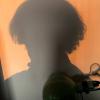
Posted
For this example I used a built-in noir-like progression from Scaler 1.6 named "Suspense 1".
First, I choose a Dorian#4 (or Natural-Minor#4) scale from the rich Synfire palette. That is a common Dorian scale with raised 4th degree (C-D-Eb-F#-G-A-Bb).

Second, I copied the Scaler progression picking the same chord in the same order from the Synfire palette. Note that in Scaler the Dorian#4 is named "Ukrainian dorian scale".

The same progression as in Synfire:

Then I assigned some "noir" sounds to Synfire using the built-in instruments: Tenor Sax, Vibraphone, Acoustic Bass, Legend Electric Piano, Jazz Drum (Brushes 1).
The Figures are rather "rarefied" to mimic a noir, vintage cinematic style. I didn't care which notes I was "writing" in Synfire, as I assume that the software will do an acceptable choice for me. Then I will refine the prototype into a DAW.
Attached to this post: the .cognac file and the resulting mp3.
Enjoy! (at least I hope) ;-)
noir.mp3
Wed, 2018-12-05 - 17:08 Permalink
Thanks for sharing this one.
It's an excellent example how chords are there that you cannot hear. Beginners often assume that chord progressions have to be a series of audible, blocked-out chords in full voicing ("pad", "carpet", "stabs"). This example demonstrates nicely how the chords (and scales) guide counterpoint melodies with an invisible hand, without actually being there.
Not accidentally, this is also what is Synfire's notion of a Harmonic Context, another word for the Harmony parameter.
Wed, 2018-12-05 - 18:26 Permalink
It's an excellent example how chords are there that you cannot hear. Beginners often assume that chord progressions have to be a series of audible, blocked-out chords in full voicing ("pad", "carpet", "stabs"). This example demonstrates nicely how the chords (and scales) guide counterpoint melodies with an invisible hand, without actually being there.
"Less is more" :-)
To me, SF is a great tool, and AFAIK without competitors except, perhaps, RapidComposer, for quick writing multipart music.
The latest versions of DAWs like StudioOne4 or Cubase10 offer an intelligent chord arranger, indeed. But those are very limited compared to the versatility of SF.
Looking forward to SF2 ;-)
Thu, 2018-12-06 - 19:25 Permalink
So you know this genre and the typical arrangements very well?
Definitely not: my first attempt with Noir music in Synfire was a horrible mess! :-D
So I had to clear everythin and get my ear on the noir style of the masters. To do this I listened to this Noir collection on Youtube and took note of two or three simple instumental combinations that worked fine.
When, more or less, I became confident with the spirit of the thing I chose a simple combo of instruments characteristic of jazz, vibraphone and so on, in order to suggest what for an European like me could be the atmosphere of the slums of an American metropolis.
I copied the Scaler progression in Synfire, then yes: I draw the "notes" by hand, just looking at the temporal succession of the figures to give them the "right" space between one another.
Hope this helps.


